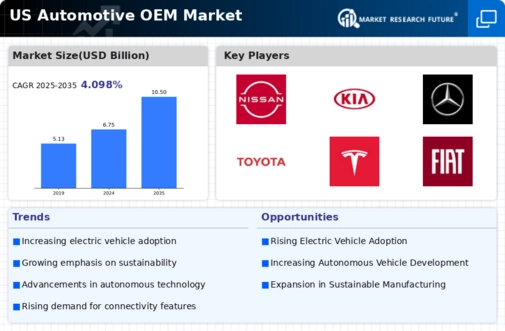The automotive OEM coatings market is characterized by a dynamic competitive landscape, driven by innovation, sustainability, and technological advancements. Key players such as PPG Industries (US), Axalta Coating Systems (US), and BASF Corporation (US) are at the forefront, each adopting distinct strategies to enhance their market positioning. PPG Industries (US) emphasizes innovation in eco-friendly coatings, while Axalta Coating Systems (US) focuses on digital transformation and customer engagement. BASF Corporation (US) is leveraging its extensive research capabilities to develop advanced materials that meet evolving regulatory standards. Collectively, these strategies contribute to a competitive environment that is increasingly focused on sustainability and technological integration.
In terms of business tactics, companies are localizing manufacturing to reduce lead times and optimize supply chains. The market structure appears moderately fragmented, with several key players holding substantial market shares. This fragmentation allows for a diverse range of products and services, fostering competition that drives innovation. The collective influence of these major players shapes market dynamics, as they continuously adapt to changing consumer preferences and regulatory requirements.
In November 2025, PPG Industries (US) announced the launch of a new line of waterborne coatings designed to reduce VOC emissions by 30%. This strategic move not only aligns with increasing environmental regulations but also positions PPG as a leader in sustainable coating solutions. The introduction of these products is likely to enhance customer loyalty and attract environmentally conscious consumers, thereby strengthening PPG's market presence.
In October 2025, Axalta Coating Systems (US) unveiled a digital platform aimed at streamlining the customer experience through enhanced product selection and order tracking. This initiative reflects Axalta's commitment to digital transformation, which is becoming increasingly vital in the automotive sector. By improving customer engagement and operational efficiency, Axalta is poised to gain a competitive edge in a market that values speed and convenience.
In September 2025, BASF Corporation (US) expanded its research and development facilities in Michigan, focusing on the development of next-generation coatings that incorporate AI technology for predictive performance analytics. This expansion signifies BASF's dedication to innovation and its intent to lead in the integration of advanced technologies within the coatings sector. Such initiatives are expected to enhance product performance and reliability, further differentiating BASF from its competitors.
As of December 2025, current competitive trends indicate a strong shift towards digitalization, sustainability, and AI integration within the automotive OEM coatings market. Strategic alliances are increasingly shaping the landscape, as companies collaborate to enhance their technological capabilities and market reach. Looking ahead, competitive differentiation is likely to evolve from traditional price-based competition to a focus on innovation, technology, and supply chain reliability. This shift underscores the importance of adaptability and forward-thinking strategies in maintaining a competitive advantage.


























Leave a Comment